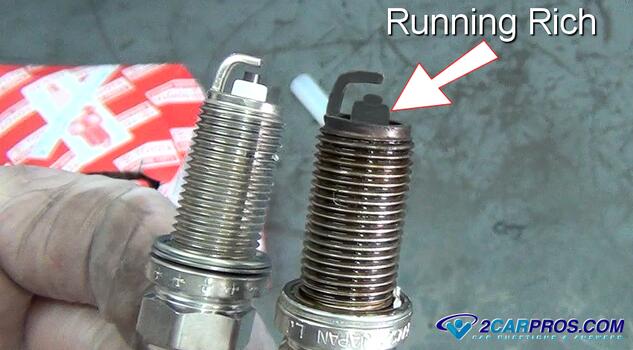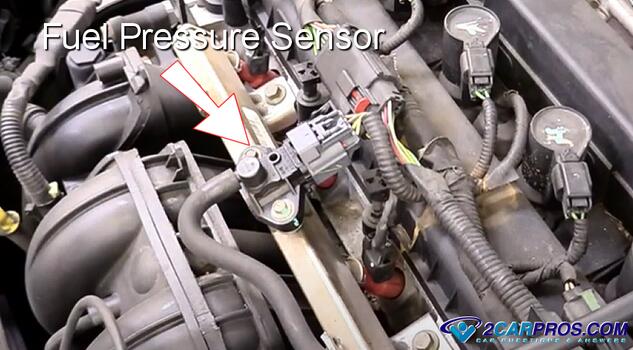Introduction
This guide was created to show you what can cause an automotive engine to have a rich fuel mixture, which may cause black smoke to be released form the exhaust tail pipe as a result of burning excessive fuel. This can lead to various problems such as reduced fuel economy, increased emissions, and potential damage to engine components such as cylinder walls or intake or exhaust valve failure.
A internal combustion engine operates at it maximum efficiency when the balance between air and fuel which is a stoichiometric ratio, approximately 14.7:1. Anytime this ratio is not in balance the engine's computer will detect the situation and trigger a check engine light. Once this happens it is best to gather the codes to help give a clue on what the problem could be.
We have listed the causes for a rich running condition by popularity, and also we address the popular components that seem like they might cause this condition but don't to help save you time and money.
1. Leaky Fuel Injector: A fuel injector is meant to disperse fuel into the combustion chamber at the correct time and then shut off. If the internal valve inside the injector fails it will allow fuel to enter the engine continuously creating the rich condition. This is easily found by removing the spark plugs and look for one that is much darker than the rest. This will be the cylinder that is having the issue and needs the fuel injector replaced.
2. Bad Fuel Pressure Sensor: Newer cars are equipped with a fuel pressure sensor which helps the engine computer regulator the amount of the fuel entering the engine, when this part goes bad it can give a P0088 or P0191 trouble code. This sensor is located on the fuel rail most of the time and is easily changed.
3. Oxygen Sensor: This sensor is used to monitor the exhaust while providing feedback data to the engine computer, this is the main fuel/air mixture sensor. These sensors are easily tested and can be done by following this guide: Oxygen Sensor Testing
4. Exhaust Leak: Most people don't know this but yes, an exhaust leak that is before the primary oxygen sensor will cause the engine to run rich. This is because the cylinder exhaust charge is a pulse, and when the exhaust valve closes it causes a vacuum behind that pulse and if there is a leak it will pull in outside air into the system. This will cause the oxygen sensor to think the engine is lean and give it too much fuel.
5. Failed Engine Coolant Temperature Sensor (ECT): If the value of the engine coolant temperature sensor becomes unstable it can report data to the engine computer which can add fuel when it is not needed. This is because a cold engine needs more fuel to run correctly, and when it's warms up it uses less fuel, so if the computer cant tell the engine is hot too much fuel will be delivered.
6. Bad MAP Sensor: This sensor is located the engine intake manifold and measures the amount of vacuum inside the engine, this is so the computer can tell if the engine is under load. An engine needs more fuel when under load, which lowers the internal vacuum. If the computer thinks the engine is working hard it will delivery more fuel creating a rich condition. This problem may not trigger a trouble code.
7. Stuck EVAP Purge Valve: This valve is typically located near the engine intake manifold and supplies momentary vacuum to the EVAP system to help control vapors inside the fuel tank. If this valve sticks open it can draw raw fuel through the charcoal canister and into the intake manifold. If you think this could be the case, remove the valve and try to blow through it, if so, the valve is bad and needs to be replaced.
8. Engine Camshaft Timing Off: The engine must have correct crankshaft to camshaft correlation for optimum compression. If the timing belt or chain has become worn it can allow the camshaft to become late one tooth or more which lowers the vacuum, forcing the engine computer to give the engine more fuel.
9. Bad Fuel Pressure Regulator: This problem was more popularly years ago when cars had external fuel pressure regulators which are located near the engine intake manifold. If you have this style of fuel system, simply remove the vacuum line from the regulator to check for raw fuel, and if so the regulator has failed and needs to be replaced.
Will Not Cause a Rich Mixture
Yes, this part may seem like it could cause a rich mixture, but in my 30 years experience it does not.
1. Mass Air Flow Sensor (MAF): I know many garages replace this sensor along with other items to help fix the problem, I have only seen the heater element inside the sensor go out or become dirty which will not cause an engine to run lean, not rich.
Conclusion
Diagnosing and fixing a rich running condition in an automotive engine requires a methodical approach to identify the underlying cause. Simple random part replaced can get expensive, it is best to go through the guide one step at the time to help alleviate unnecessary repairs.
Credits
This guide knowledge base was created by the 2CarPros Team, and by Ken Lavacot: Automobile repair shop owner and certified master automobile technician of over 30 years. If you have question or need help please ask one of our experts we are happy to help. Please visit our 2CarPros YouTube Channel for additional car repairs.





